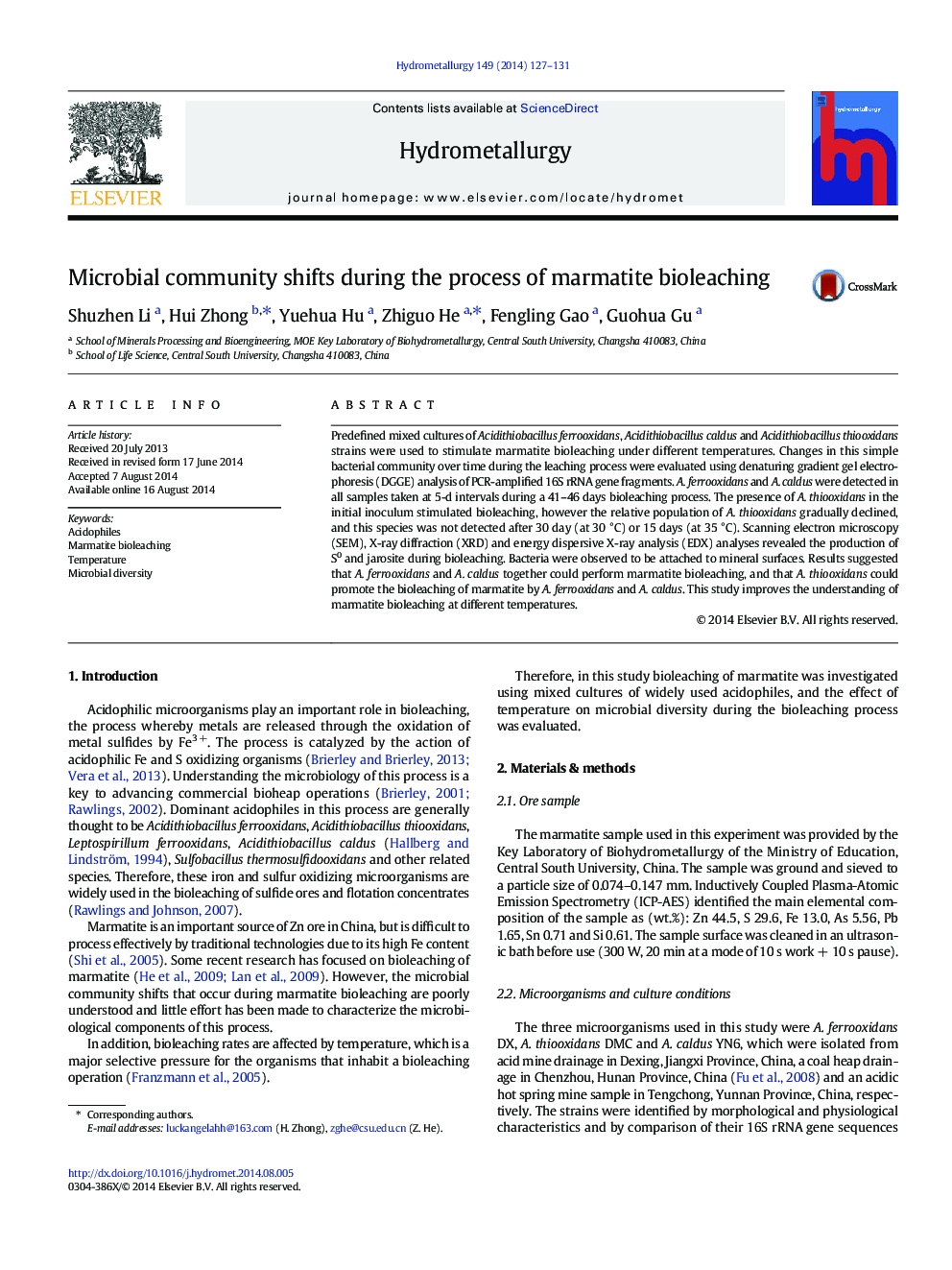| Article ID | Journal | Published Year | Pages | File Type |
|---|---|---|---|---|
| 212248 | Hydrometallurgy | 2014 | 5 Pages |
•First report on the population structure during marmatite bioleaching.•Investigated effects of temperatures on community composition & bioleaching process.•Comprehensively studied community change & important factors affecting bioleaching.•Bioleaching by A. f & A. c was found to be promoted by A. t.•Combined XRD, EDX & SEM results showed component & surface feature changes.
Predefined mixed cultures of Acidithiobacillus ferrooxidans, Acidithiobacillus caldus and Acidithiobacillus thiooxidans strains were used to stimulate marmatite bioleaching under different temperatures. Changes in this simple bacterial community over time during the leaching process were evaluated using denaturing gradient gel electrophoresis (DGGE) analysis of PCR-amplified 16S rRNA gene fragments. A. ferrooxidans and A. caldus were detected in all samples taken at 5-d intervals during a 41–46 days bioleaching process. The presence of A. thiooxidans in the initial inoculum stimulated bioleaching, however the relative population of A. thiooxidans gradually declined, and this species was not detected after 30 day (at 30 °C) or 15 days (at 35 °C). Scanning electron microscopy (SEM), X-ray diffraction (XRD) and energy dispersive X-ray analysis (EDX) analyses revealed the production of S0 and jarosite during bioleaching. Bacteria were observed to be attached to mineral surfaces. Results suggested that A. ferrooxidans and A. caldus together could perform marmatite bioleaching, and that A. thiooxidans could promote the bioleaching of marmatite by A. ferrooxidans and A. caldus. This study improves the understanding of marmatite bioleaching at different temperatures.
